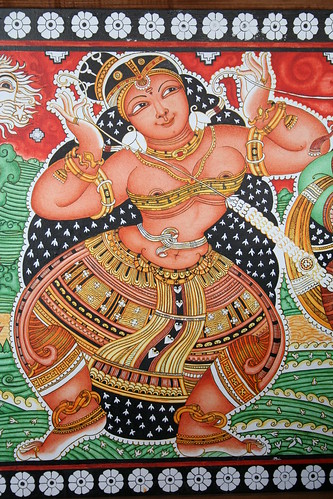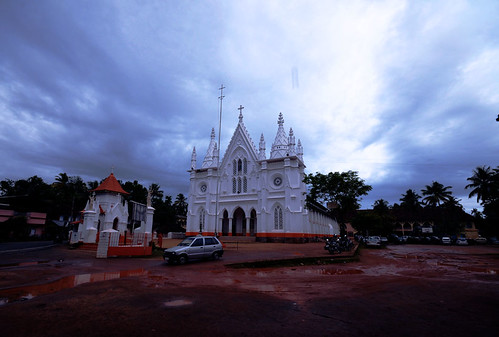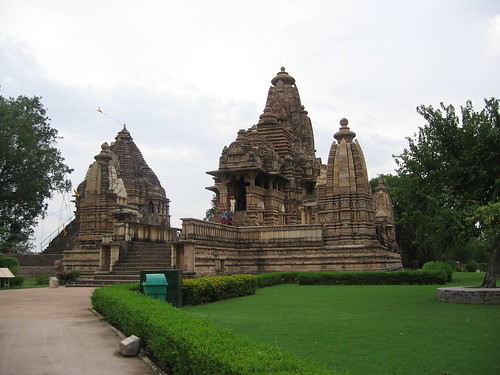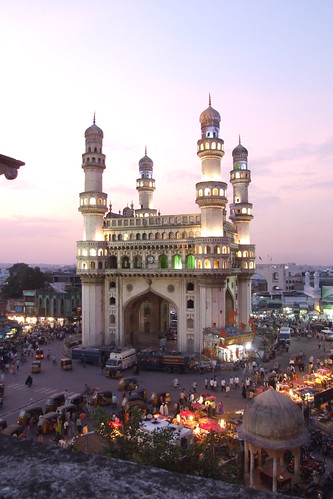Kovalam beach is known to many people as the "Paradise of the South". Kovalam is about 16 km from Thiruvananthapuram (Trivandrum), the capital city of Kerala.
Kovalam is finding a new significance in the light of several Ayurveda salons, and recuperation and regeneration resorts which provide a wide variety of Ayurveda treatments and body massages for tourists.
There are three beaches at Kovalam. The larger beach is called the Light House Beach for its 30-meter-high light house. The second largest one is Hawah Beach named so because of the topless European women who used to throng there. It was the first topless beach in India. Top-free bathing and parading is now banned, except in private coves owned by resorts and hotels that are plenty here. Mostly visitors frequent these two beaches. The northern part of the beach is known as Samudra Beach. A large promontory separates this part from the southern side. Samudra Beach does not attract many tourists. The local fishermen ply their trade on this beach.
The sands on the beaches in Kovalam are partially black in color due to the presence of ilmenite and thorazite. The normal tourist season is from September to May, though it is an all-weather beach with moderate climate round the year.
The sea port of Vizhinjam is about 3 km from Kovalam and famous for its special varieties of fish, old Hindu temples, big churches and a mosque. The Proposed International Trans shipment Terminal at Vizhinjam is also close to Kovalam.
Tuesday, January 27, 2009
Kovalam Beach 2701092
Kovalam 2701091
A wall painting at Hotel Samudra, Kovalam, Kerala, India.
Tuesday, January 20, 2009
Kottakkavu Church of St. Thomas, 52 AD
The author of this photo says, “The new Church replacing the original Kottakkavu Church consecrated by St. Thomas, the Apostle around 52 AD at, what is today, North Parur, in Ernakulam District of Kerala. Tradition says, St. Thomas (Mar Thoma) landed in Malabar Coast around 50 AD and set up seven churches. This is the site of one of the oldest Churches in India. The present structure is the fourth building erected at the site, the third having been built in the 14th century AD.”
According to Wikipedia, the indigenous Church of Kerala, India, has a tradition that St. Thomas sailed to Kerala to spread the Christian faith. He is believed to have landed at a small village, at that time a seaport, named Palayoor, near Guruvayoor, which had a priestly community at that time. He left Palayoor in AD 52 for southern parts of the Kerala State, where he established the Ezharappallikal, or Seven and Half Churches. These churches are at Kodungallur, Kollam, Niranam, Nilackal (Chayal), Kokkamangalam (situated midway between Cochin and Kumarakom, on the western shore of Vembanad Lake, 5 km east of Cherthala), Kottakkayal (Paravoor), Palayoor (Chattukulangara) and the half church in Thiruvithamcode Arappally (Travancore).
Sunday, January 18, 2009
Sculpture at the Lakshman Temple, Khajuraho
Lakhmana Temple is the oldest and the finest of the Western Group of Temples in Khajuraho. This beautiful Vaishnavite Hindu temple is named after the ruler who built it. There is a horizontal beam over the entrance of the temple showing the trinity of Brahma, Vishnu and Shiva with Lakshmi, Vishnu’s consort.
There is a nominal entry fee for all visitors to enter the Western Group of temples. All the temples are open from sunrise to sunset. These are the most spectacular and largest of all temple groups.
The other important temples in the Western Group of Temples are:
Kandariya Mahadeo Temple is decorated with a profusion of sculptures that are among the greatest masterpieces of Indian art during the reign of Chandela Dynasty of Central India, built between 950 and 1050 A.D.
Devi Jagdamba Temple is dedicated to Goddess of the Universe (Jagdamba), a smaller and much more delicately proportioned temple. It is home to some of the finest sculptures of Khajuraho. The garbha griha has a huge image of Goddess Jagdamba. It has the usual three bands of sculptures, but the third and most uppermost of these houses some of the most sensual sculptures.
Matanageswara Temple is a temple dedicated to Shiva and a huge 8ft Lingam adorns the temple.
Chitragupta Temple is dedicated to the Sun God (Surya) and as such it faces eastward to the rising sun.
Chaunsat Yogini Temple is the only granite temple in the Khajuraho group.
Lakshmana Temple Khajuraho
The photo shows the highly decorated Lakshmana temple along with Matengaswara Temple of simple architecture and ornamentation - picture shot from the Varaha temple. The Matengeswara temple houses a Shiva idol where daily pujas are being performed, unlike in the other temples in the western group of temples in Kahjuraho, built by Chandela kings. Lakshmana temple is believed to be built by the Chandela King of the same name.
The maturity in the sculpture can be seen in various temples as one proceeds from the earlier built temples to the later ones and can be discerned from the form and the variety of the facial and other forms of expressions in the sculptures. It is evident in the most developed, largest and the tallest of the temples, Kandariya Mahadeva Temple on the south western most corner of the temple complex. Location: Madhya Pradesh, India; photo by: Jayashankar, uploaded to Flickr.com on 20 Feb 07, 10.05AM PST.
Saturday, January 17, 2009
Khajuraho 1701093
Welcome to Khajuraho Group of Monuments, A World Heritage!
Khajuraho (Hindi: खजुराहो) is a village located in Chhatarpur District, Madhya Pradesh, India. It is 385 miles (620 KM) southeast of Delhi, the capital city of India.
The Khajuraho group of monuments is listed as a UNESCO World Heritage Site.
One of the most popular tourist destinations in India, Khajuraho has the largest group of medieval Hindu temples and Jain temples which are famous for their sculpture. The name Khajuraho, "Kharjuravahaka" in olden times, is derived from the word "khajur" that means date palm.
Khajuraho 1701092
Here is yet another great shot of western group of monuments of Khajuraho, India
Khajuraho 1701091
Western Group of Monuments, Khajuraho, India
Friday, January 16, 2009
Charminar in Hyderabad
Charminar, meaning "Four Towers" or "Mosque of the four minarets", is one of the most important monuments in the city of Hyderabad, the capital of the Indian state of Andhra Pradesh. The area surrounding Charminar is also known by same name. There is a market around Charminar. The Charminar looks particularly spectacular at night when it is illuminated.
According to history, Muhammad Quli Qutb Shah built the monument in 1591, shortly after he had shifted his capital from Golkonda to Hyderabad. As per legends, the building was built to honor a promise Quli Qutb Shah made to Allah. He had prayed for the end of a devastating plague and vowed to Allah that he would build a mosque there.
There are also legends that in 1591 while laying the foundation of Charminar, Quli prayed, “Oh God, bestow unto this city peace and prosperity. Let millions of men of all castes, creeds and religions make it their abode, like fishes in the water”. The mosque became popularly known as Charminar. The four minarets were possibly to honor the first four caliphs of Islam. The actual mosque is at the top floor of the four-story structure.
The Charminar is a square monument. Each side measures 20 meters, and each of the corners has a tall, pointed minaret, soaring to a height of 48.7 m (159.77 ft) from the ground. Unlike the Taj Mahal, Charminar's four minarets are built into the main structure. In each minaret 149 winding steps take the visitors to the top floor that provides a panoramic view of the city of Hyderabad and the surrounding areas.
Each arch of the Charminar is 11 m wide and rises 20 m from the plinth, which is like a large table 7-8 feet above the ground with steps to go up. The four arches have clocks that were installed in 1889. A vault that appears from inside like a dome, supports two galleries within the Charminar, one over another. The main gallery has 45 covered prayer spaces with a large open space to accommodate more people for the Friday prayers.
Built with granite and lime mortar, Charminar is a fine example of the Cazia style of architecture. Locally available granite, sand and lime were used for construction. During the Mughal Governorship, the south western minaret fell to pieces after being struck by lightning, but it was repaired immediately. In 1824 the monument was re-plastered.













